A Design Method of Traveling Wave Rotary Ultrasonic Motors Driving Circuit under High Voltage Using Single-Sided Hertzian Contact Forced Oscillator Model
Abstract
1. Introduction
2. Analysis of Nonlinear Dynamics
2.1. Mechanism of TRUM
2.2. Frequency Response Analysis of TRUM
3. Modeling and Identification
4. Drive Circuit Design Method and Experiment Validation
5. Conclusions
Author Contributions
Funding
Data Availability Statement
Conflicts of Interest
References
- Zhao, C. Ultrasonic Motors—Technologies and Applications; Springer: Berlin/Heidelberg, Germany, 2011. [Google Scholar]
- He, Y.; Yao, Z.; Dai, S.; Zhang, B. Hybrid simulation for dynamic responses and performance estimation of linear ultrasonic motors. Int. J. Mech. Sci. 2019, 153–154, 219–229. [Google Scholar] [CrossRef]
- Wu, J.; Mizuno, Y.; Nakamura, K. Polymer-based ultrasonic motors utilizing high-order vibration modes. IEEE/ASME Trans. Mechatron. 2018, 23, 788–799. [Google Scholar] [CrossRef]
- Liang, W.; Ma, J.; Ng, C.; Ren, Q.; Huang, S.; Tan, K.K. Optimal and intelligent motion control scheme for an ultrasonic-motor-driven xy stage. Mechatronics 2019, 59, 127–139. [Google Scholar] [CrossRef]
- Matsumoto, T.; Mu, S.; Shibata, S.; Yamamoto, T.; Nakashima, S.; Tanaka, K. Study on a differential evolution type neural network for intelligent control of ultrasonic motor on a meal-assistance robot. In Proceedings of the 2020 International Symposium on Computer, Consumer and Control (IS3C), Taichung City, Taiwan, 13–16 November 2020. [Google Scholar]
- Pigache, F.; Nadal, C. Modeling and identification of Rosen-type transformer in nonlinear behavior. IEEE Trans. Ultrason. Ferroelectr. Freq. Control 2011, 58, 2562–2570. [Google Scholar] [CrossRef] [PubMed][Green Version]
- Jiang, C.; Wu, X.; Lu, D.; Xu, Z.; Jin, L. Contact modeling and performance evaluation of ring type traveling wave ultrasonic motors considering stator teeth. Ultrasonics 2021, 117, 106518. [Google Scholar] [CrossRef]
- Gao, J.; Cao, S.Q. Primary Resonance of a Disk-type Stator for Rotary Traveling Wave Ultrasonic Motor. Int. J. Nonlinear Sci. Numer. Simul. 2007, 8, 561–570. [Google Scholar] [CrossRef]
- Chen, H.; Nie, R.; Han, W.; Qiu, J. Improvement Mechanism of Energy Conversion Efficiency in Ultrasonic Motor with Flexible Rotor. Ultrasonics 2021, 120, 106659. [Google Scholar] [CrossRef] [PubMed]
- Mustafa, A.; Morita, T. Efficiency optimization of rotary ultrasonic motors using extremum seeking control with current feedback. Sens. Actuators A Phys. 2019, 289, 26–33. [Google Scholar] [CrossRef]
- Shi, W.; Zhao, H.; Zhao, B.; Qi, X.; Chen, W.; Tan, J. Extended optimum frequency tracking scheme for ultrasonic motor. Ultrasonics 2018, 90, 63–70. [Google Scholar] [CrossRef]
- Ming, M.; Liang, W.; Feng, Z.; Ling, J.; Al Mamun, A.; Xiao, X. PID-type sliding mode-based adaptive motion control of a 2-DOF piezoelectric ultrasonic motor driven stage. Mechatronics 2021, 76, 102543. [Google Scholar] [CrossRef]
- Petit, L.; Rizet, N.; Briot, R.; Gonnard, P. Frequency behaviour and speed control of piezomotors. Sens. Actuators A Phys. 2000, 80, 45–52. [Google Scholar] [CrossRef]
- Nakagawa, Y.; Saito, A.; Maeno, T. Nonlinear dynamic analysis of traveling wave-type ultrasonic motors. IEEE Trans. Ultrason. Ferroelectr. Freq. Control 2008, 55, 717–725. [Google Scholar] [CrossRef] [PubMed]
- Gao, J.; Cao, S.Q. Second-order approximation of primary resonance of a disk-type piezoelectric stator for traveling wave vibration. Nonlinear Dyn. 2010, 61, 591–603. [Google Scholar] [CrossRef]
- Wallaschek, J. Contact mechanics of piezoelectric ultrasonic motors. Smart Mater. Struct. 1998, 7, 369. [Google Scholar] [CrossRef]
- Yamaguchi, T.; Adachi, K.; Ishimine, Y.; Kato, K. Wear mode control of drive tip of ultrasonic motor for precision positioning. Wear 2004, 256, 145–152. [Google Scholar] [CrossRef]
- Li, J.; Qu, J.; Zhang, Y. Wear properties of brass and PTFE—Matrix composite in traveling wave ultrasonic motors. Wear 2015, 338, 385–393. [Google Scholar] [CrossRef]
- Zhu, Y.; Yang, T.; Fang, Z.; Shiyang, L.; Cunyue, L.; Yang, M. Contact modeling for control design of traveling wave ultrasonic motors. Sens. Actuators A Phys. 2020, 310, 112037. [Google Scholar] [CrossRef]
- Zhang, B.; Yuan, X.; Zeng, Y.; Lang, L.; Liang, H.; Zhang, Y. Dahl Friction Model for Driving Characteristics of V-Shape Linear Ultrasonic Motors. Micromachines 2022, 13, 1407. [Google Scholar] [CrossRef]
- Shi, W.; Zhao, H.; Ma, J.; Yao, Y. Dead-zone compensation of an ultrasonic motor using an adaptive dither. IEEE Trans. Ind. Electron. 2017, 65, 3730–3739. [Google Scholar] [CrossRef]
- Chen, C.; She, C. Creep Effect Analysis at the Friction Interface of a Rotary Ultrasonic Motor. Int. J. Appl. Mech. 2015, 7, 1550031. [Google Scholar] [CrossRef]
- Mustafa, A.; Morita, T. Dynamic preload control of traveling wave rotary ultrasonic motors for energy efficient operation. Jpn. J. Appl. Phys. 2019, 58, SGGD04. [Google Scholar] [CrossRef]
- Merry, R.J.E.; Maassen, M.G.J.M.; van de Molengraft, M.J.G.; Van de Wouw, N.; Steinbuch, M. Modeling and waveform optimization of a nano-motion piezo stage. IEEE/ASME Trans. Mechatron. 2010, 16, 615–626. [Google Scholar] [CrossRef]
- Sabarianand, D.; Karthikeyan, P.; Muthuramalingam, T. A review on control strategies for compensation of hysteresis and creep on piezoelectric actuators based micro systems. Mech. Syst. Signal Process. 2020, 140, 106634. [Google Scholar] [CrossRef]
- Devos, S.; Reynaerts, D.; Van Brussel, H. Minimising heat dissipation in ultrasonic piezomotors by working in a resonant mode. Precis. Eng. 2008, 32, 114–125. [Google Scholar] [CrossRef]
- Shi, W.; Zhao, H.; Ma, J.; Yao, Y. Optimal working frequency of ultrasonic motors. Ultrasonics 2016, 70, 38–44. [Google Scholar] [CrossRef] [PubMed]
- Shi, J.; Zhao, F.; Shen, X.; Wang, X. Chaotic operation and chaos control of travelling wave ultrasonic motor. Ultrasonics 2013, 53, 1112–1123. [Google Scholar] [CrossRef] [PubMed]
- Mashimo, T.; Terashima, K. Experimental verification of elliptical motion model in traveling wave ultrasonic motors. IEEE/ASME Trans. Mechatron. 2015, 20, 2699–2707. [Google Scholar] [CrossRef]
- Sashida, T.; Kenjo, T. An Introduction to Ultrasonic Motors; Oxford University Press: Oxford, UK, 1993. [Google Scholar]
- Ren, W.; Yang, L.; Ma, C.; Li, X.; Zhang, J. Output performance simulation and contact analysis of traveling wave rotary ultrasonic motor based on ADINA. Comput. Struct. 2019, 216, 15–25. [Google Scholar] [CrossRef]
- Bichri, A.; Belhaq, M.; Perret-Liaudet, J. Control of vibroimpact dynamics of a single-sided Hertzian contact forced oscillator. Nonlinear Dyn. 2011, 63, 51–60. [Google Scholar] [CrossRef]
- Thothadri, M. Nonlinear System Identification and Control of Fluid-Elastic Vibrations of a Cylinder Row Using Bifurcation Theory. Ph.D. Thesis, Cornell University, Ithaca, NY, USA, 1999. [Google Scholar]
- Thothadri, M.; Casas, R.A.; Moon, F.C.; D’Andrea, R.; Johnson, C.R. Nonlinear System Identification of Multi-Degree-of-Freedom Systems. Nonlinear Dyn. 2003, 32, 307–322. [Google Scholar] [CrossRef]
- Perret-Liaudet, J.; Rigaud, E. Response of an impacting Hertzian contact to an order-2 subharmonic excitation: Theory and experiments. J. Sound Vib. 2006, 296, 319–333. [Google Scholar] [CrossRef]

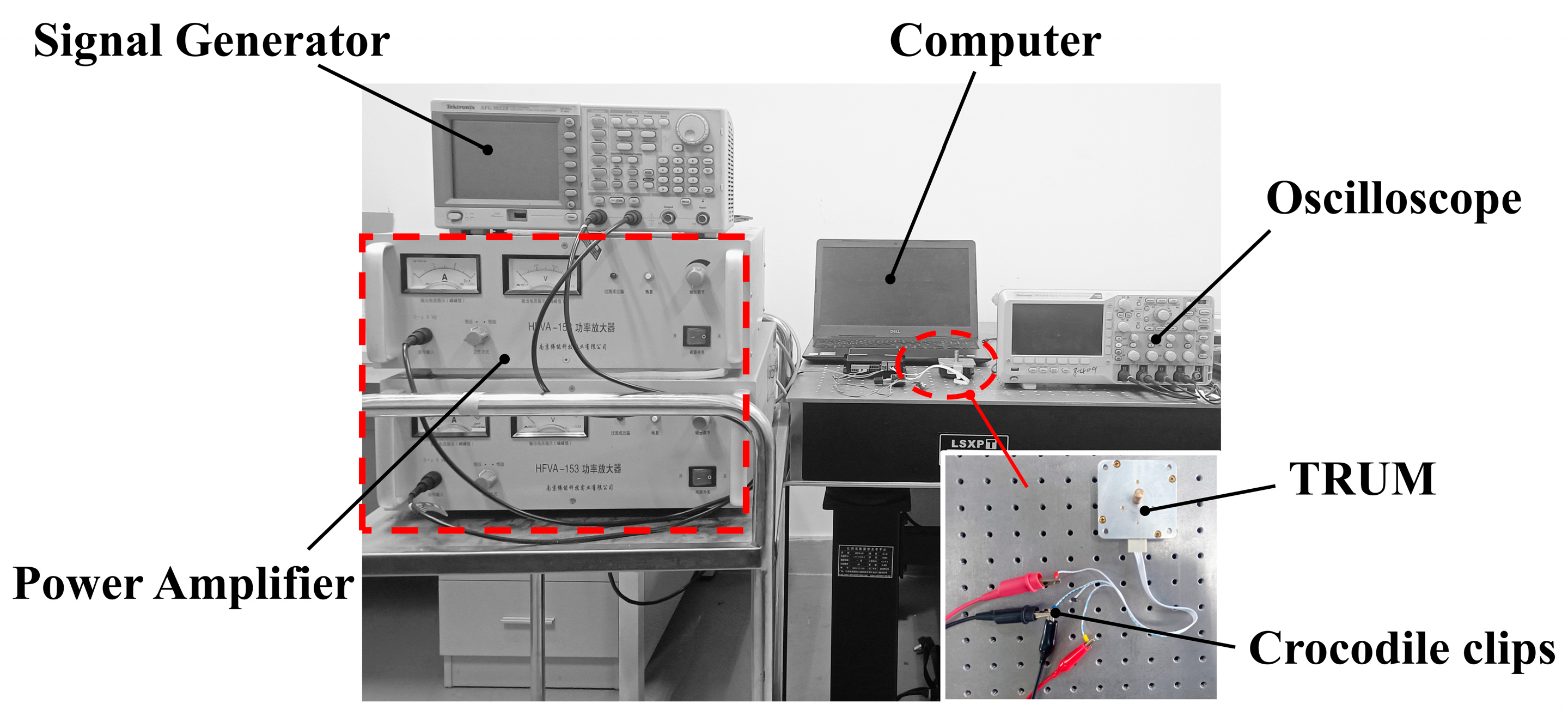
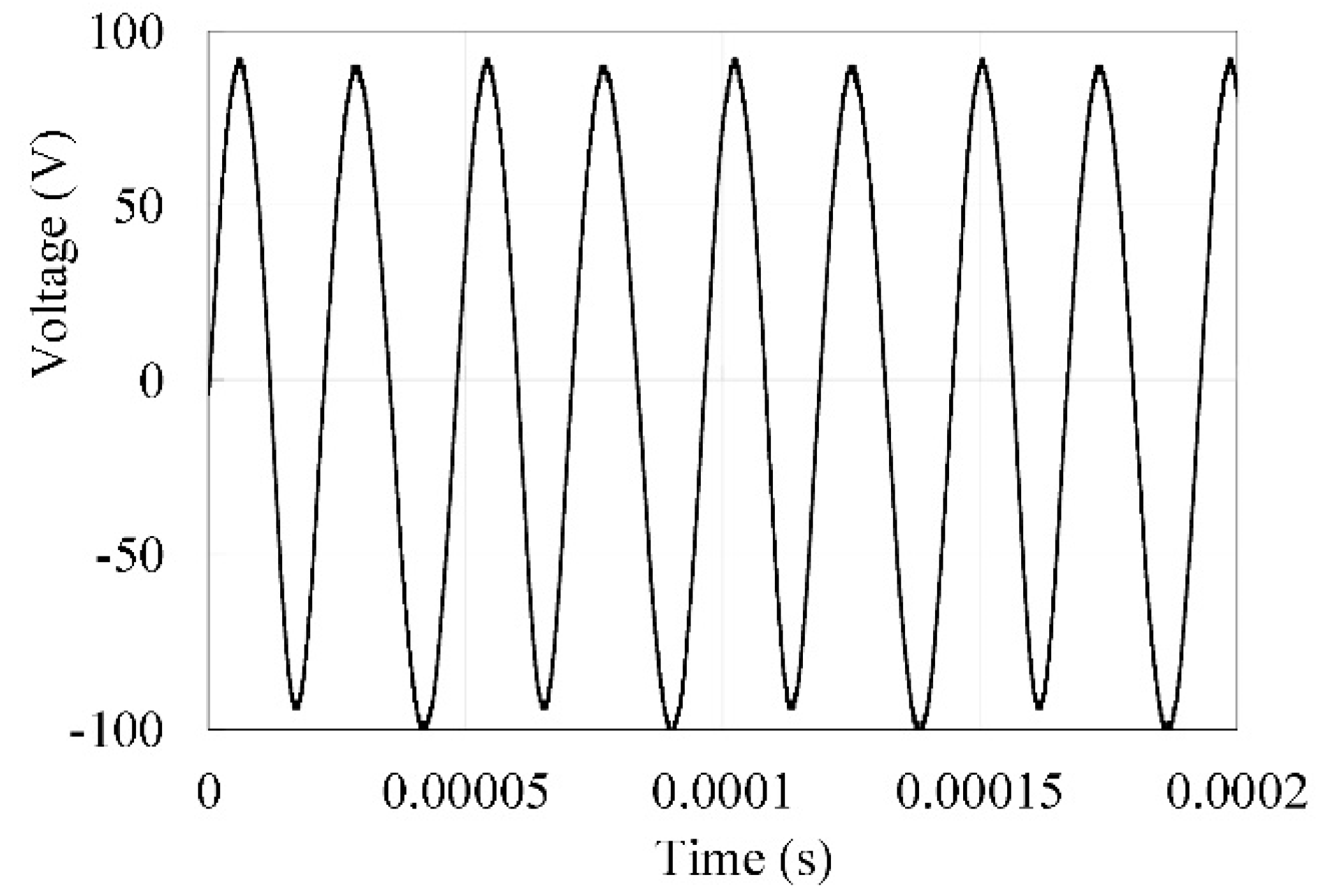
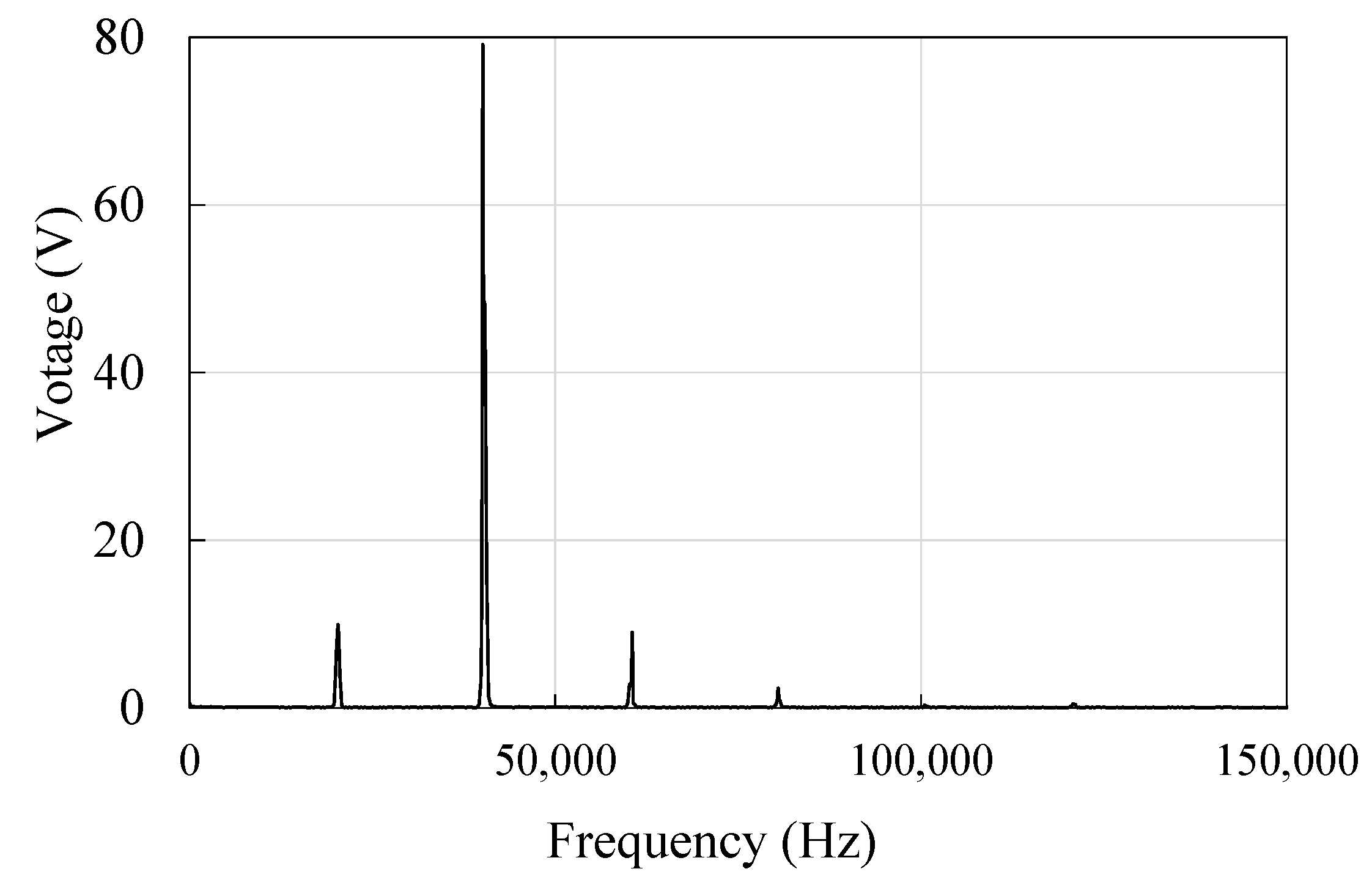
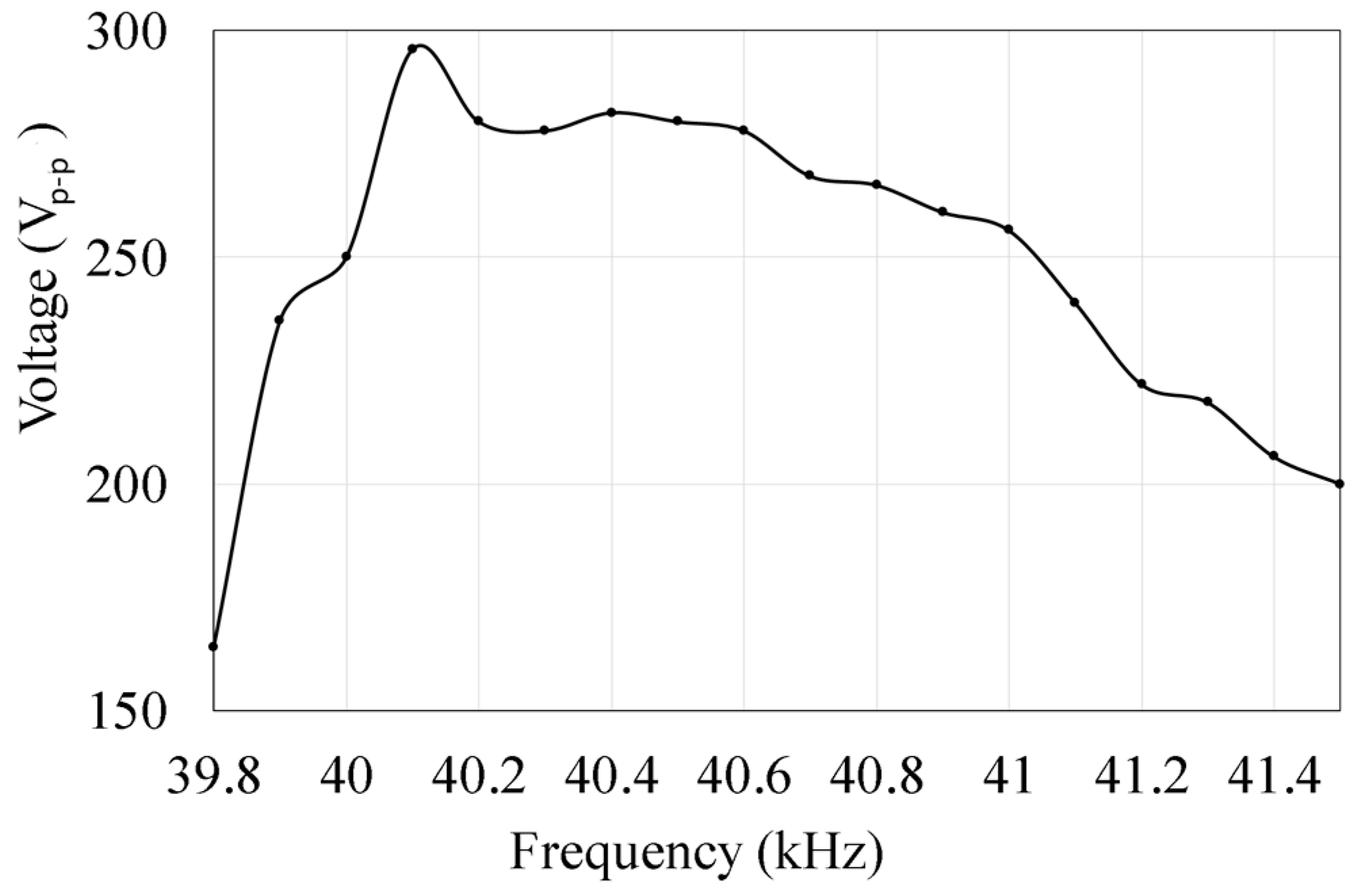


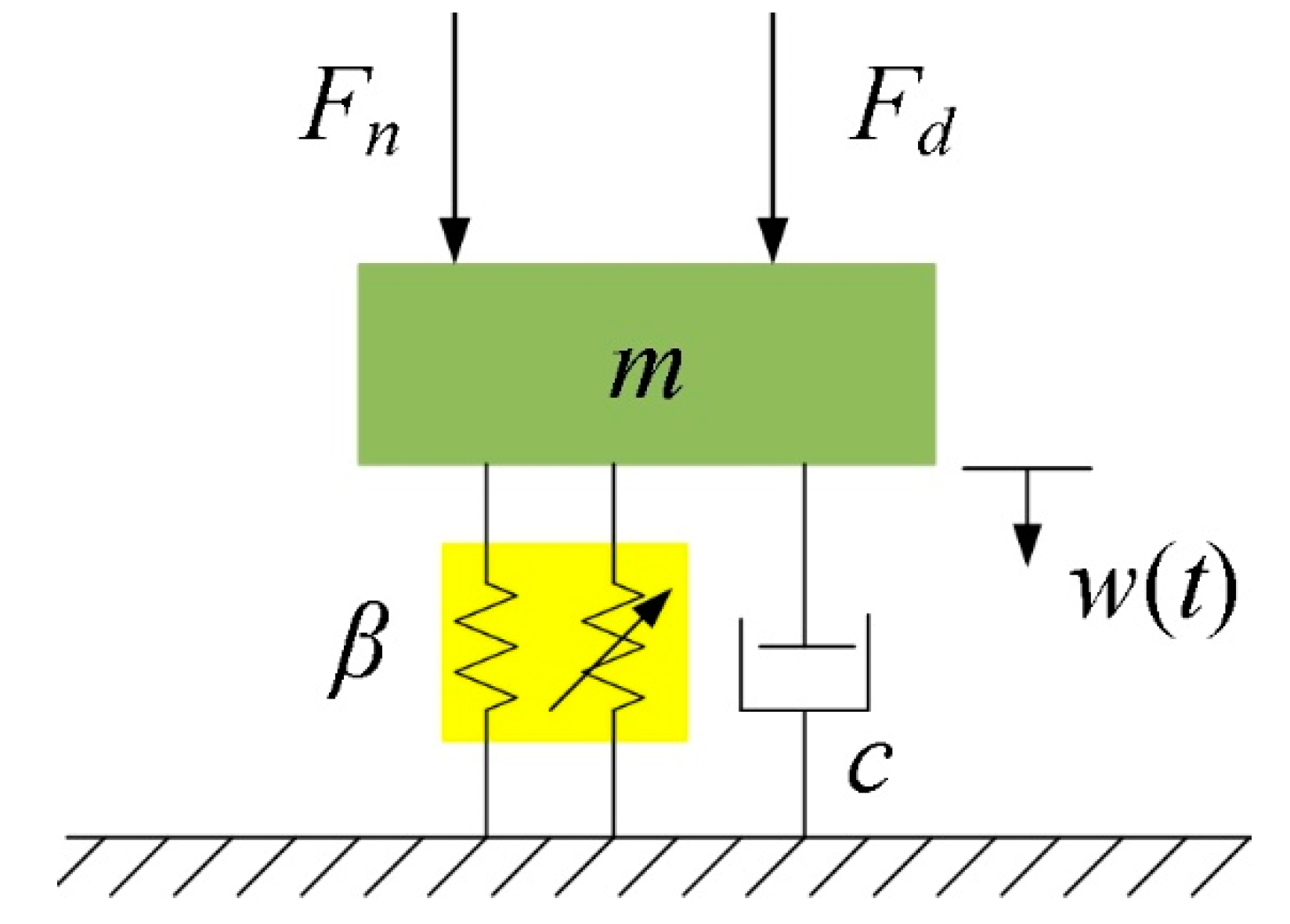
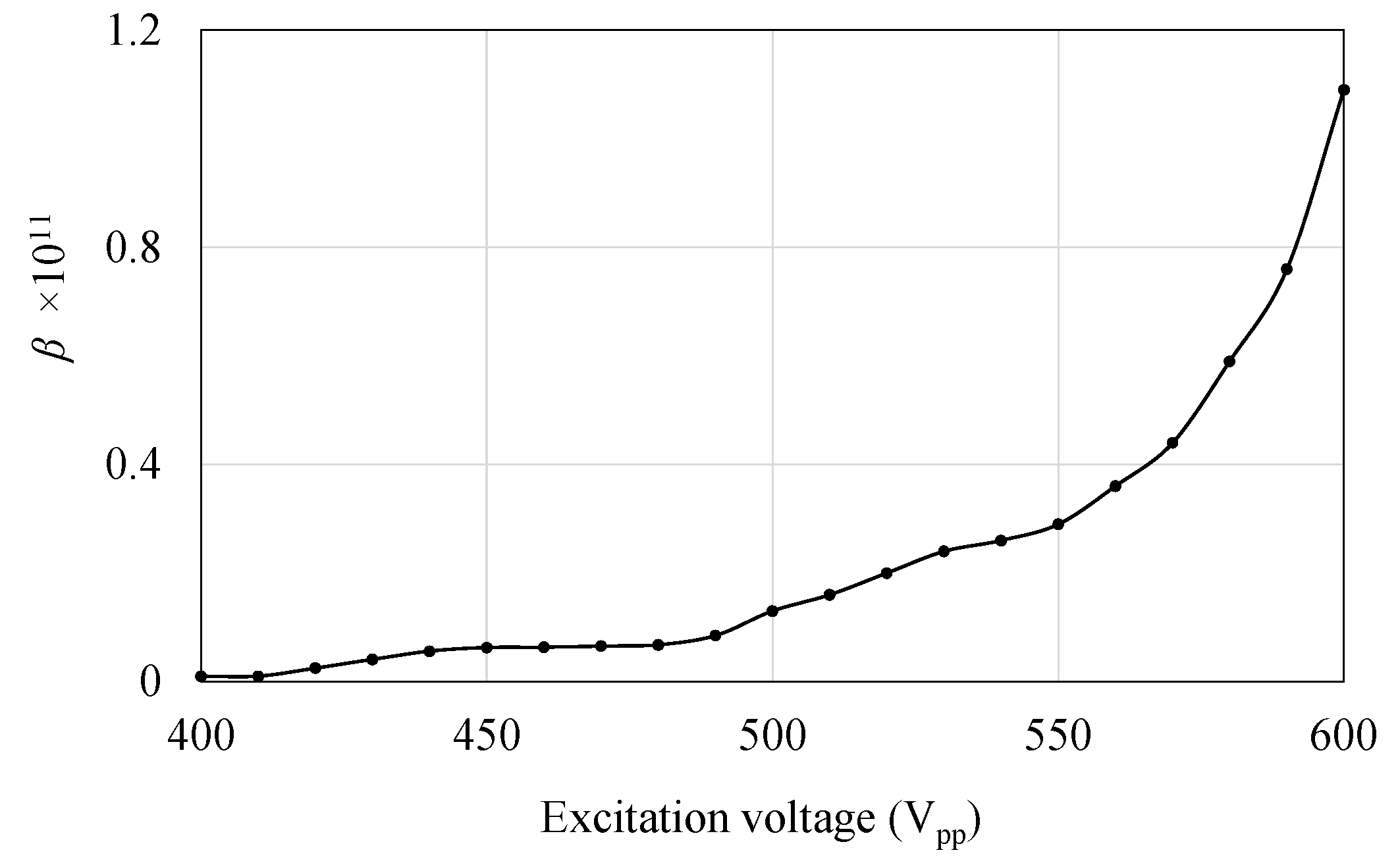
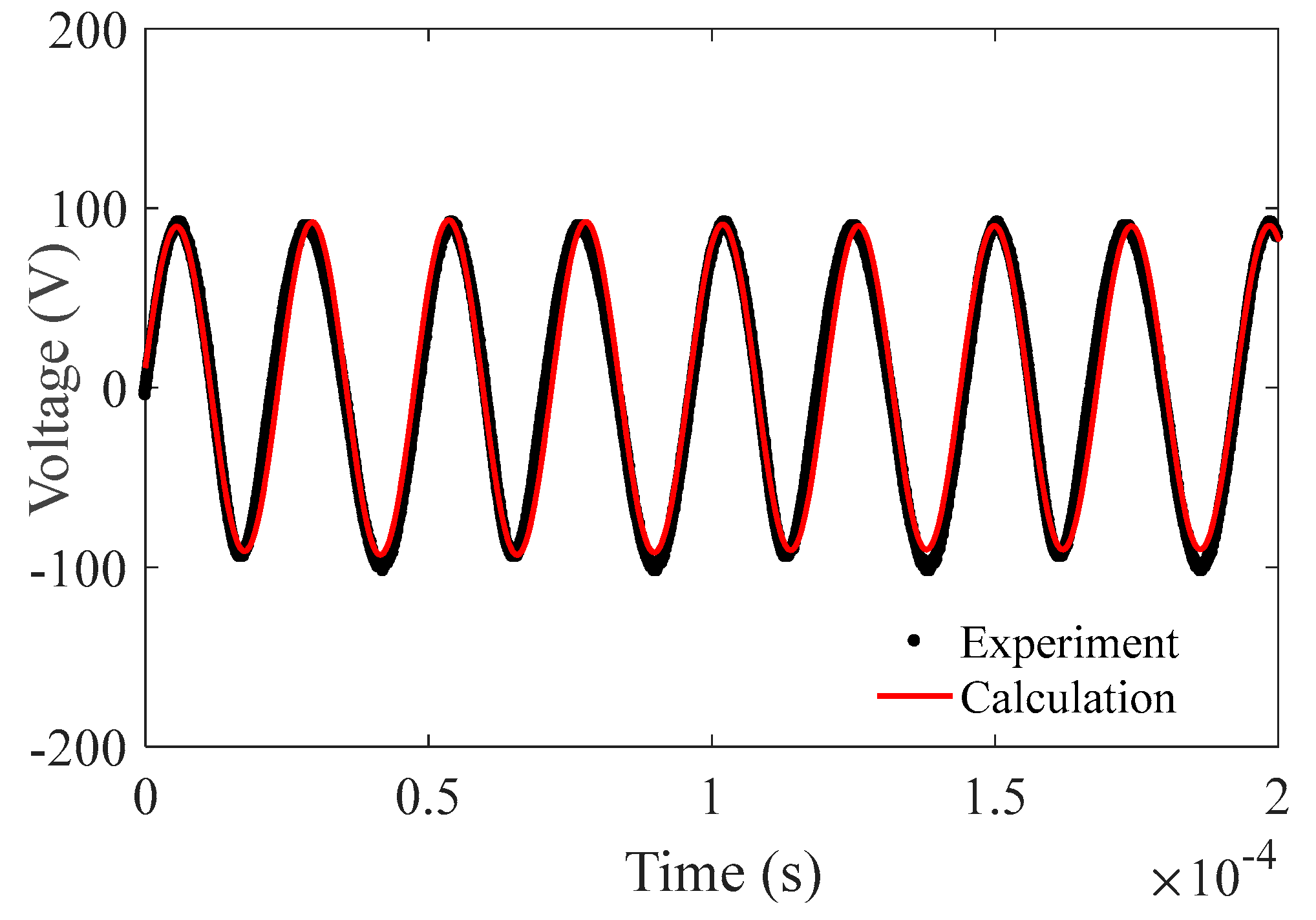
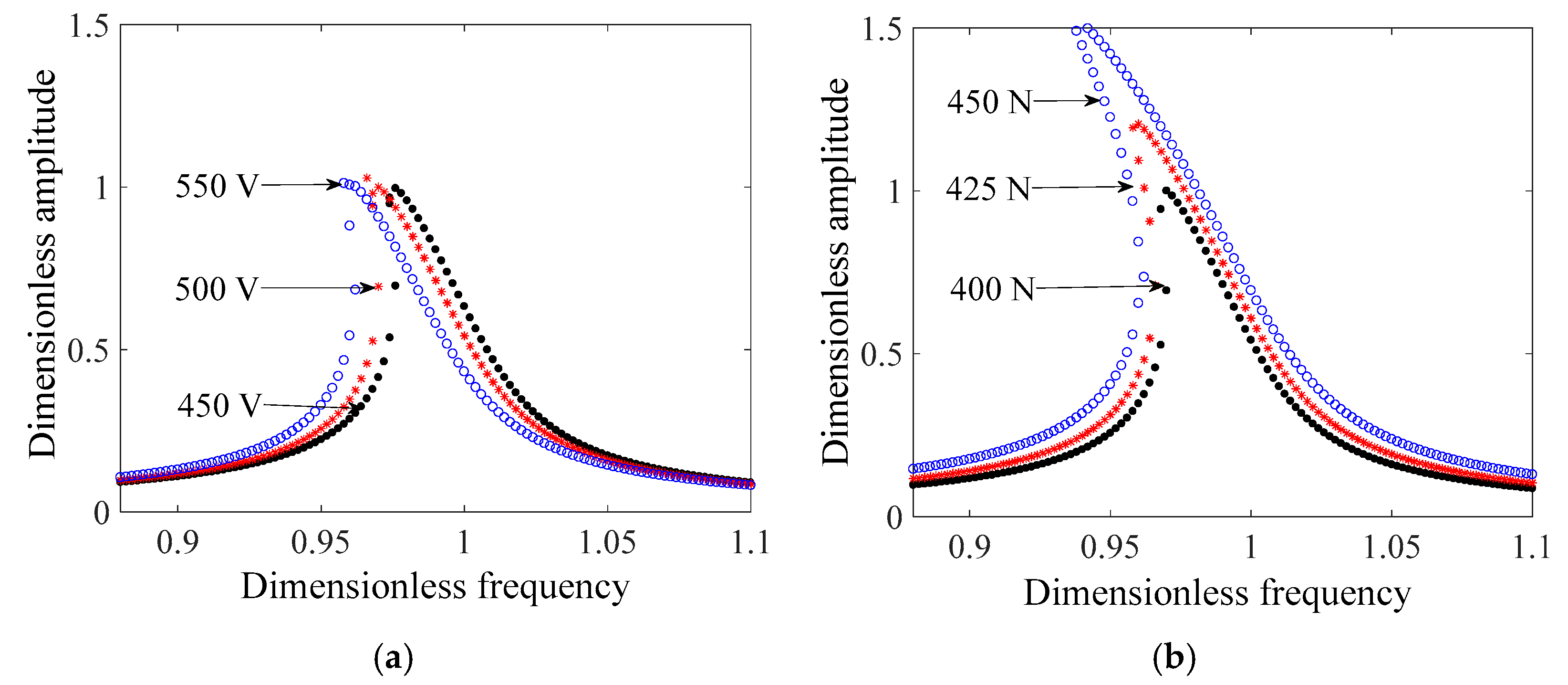
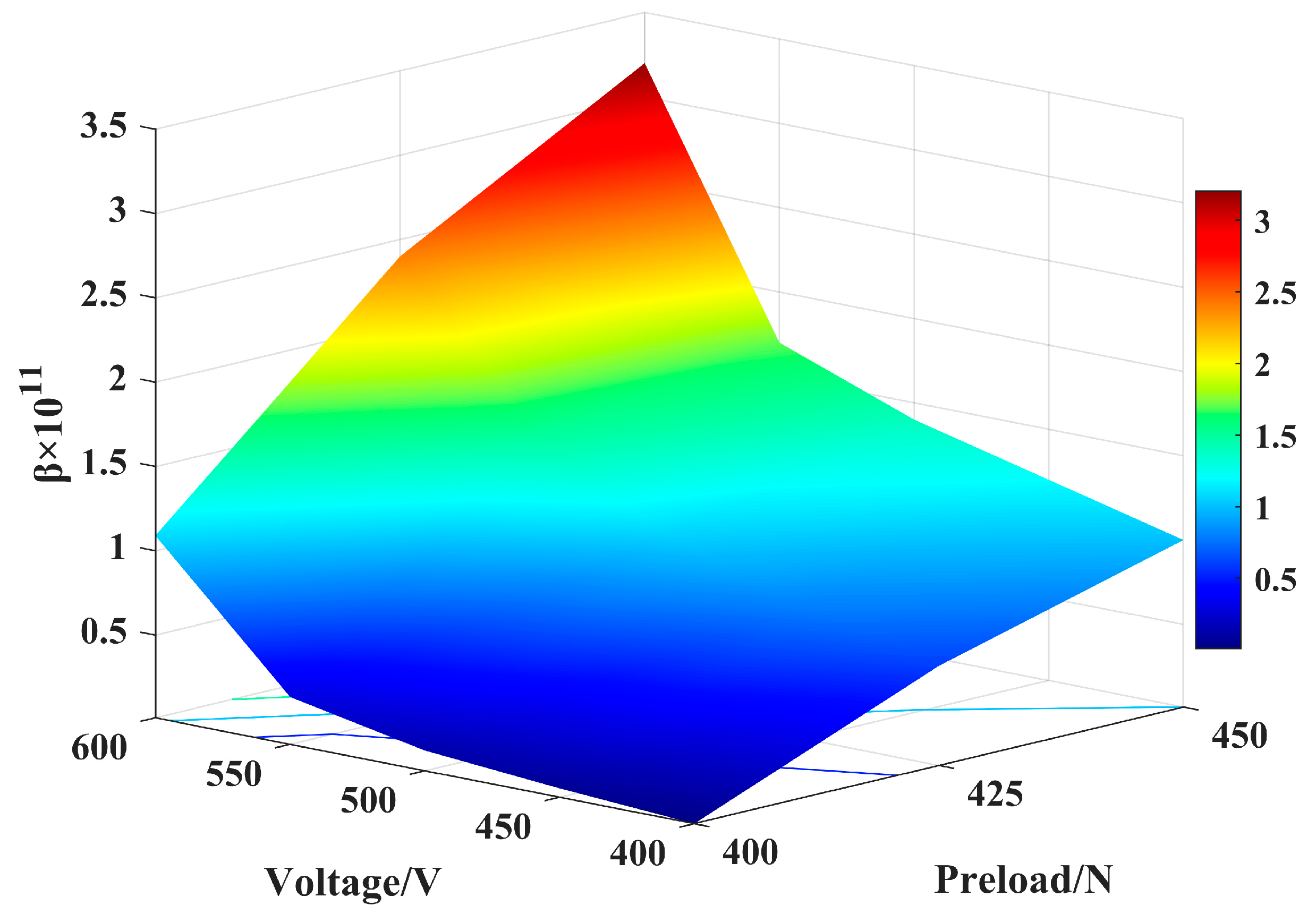
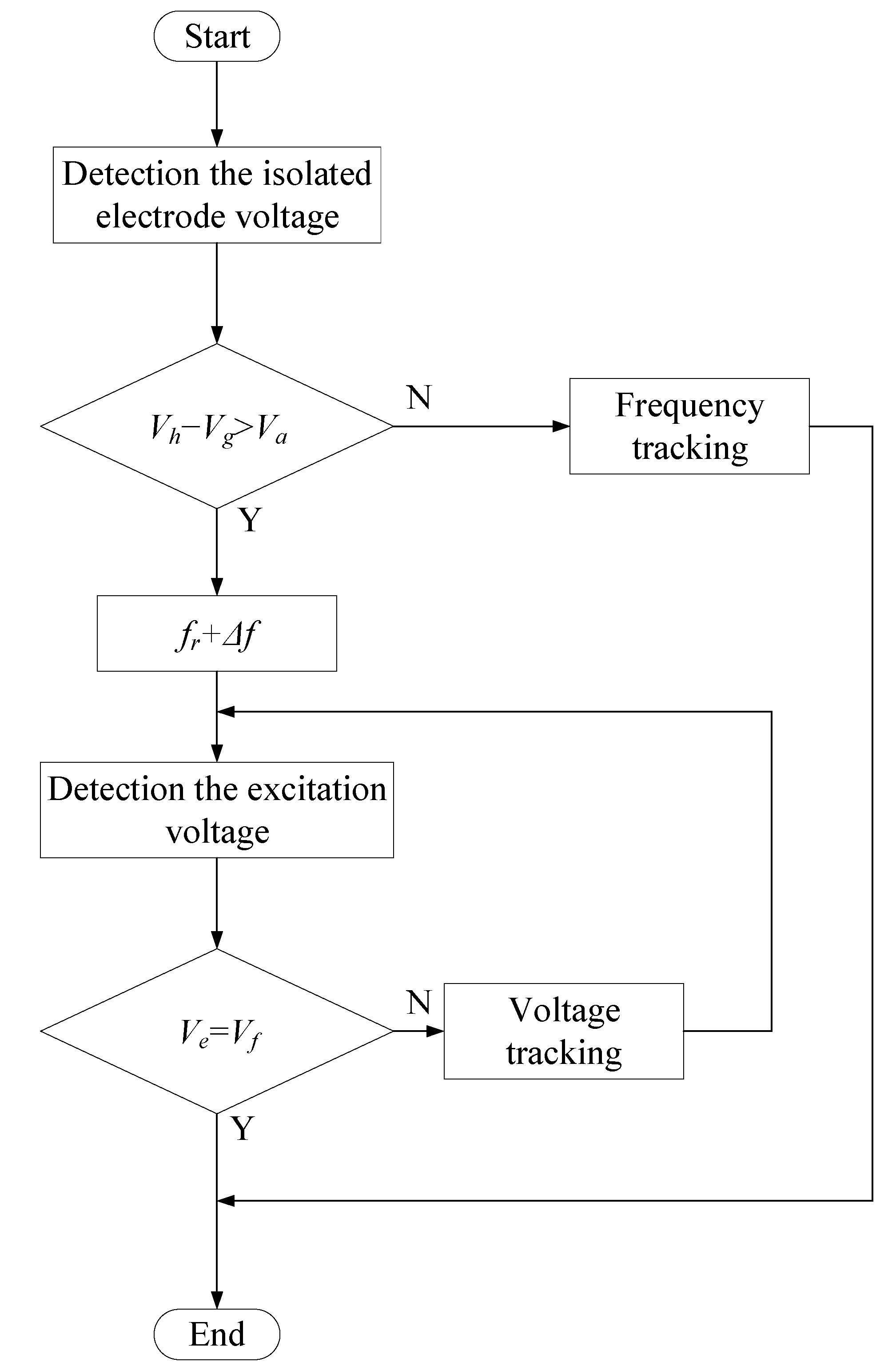

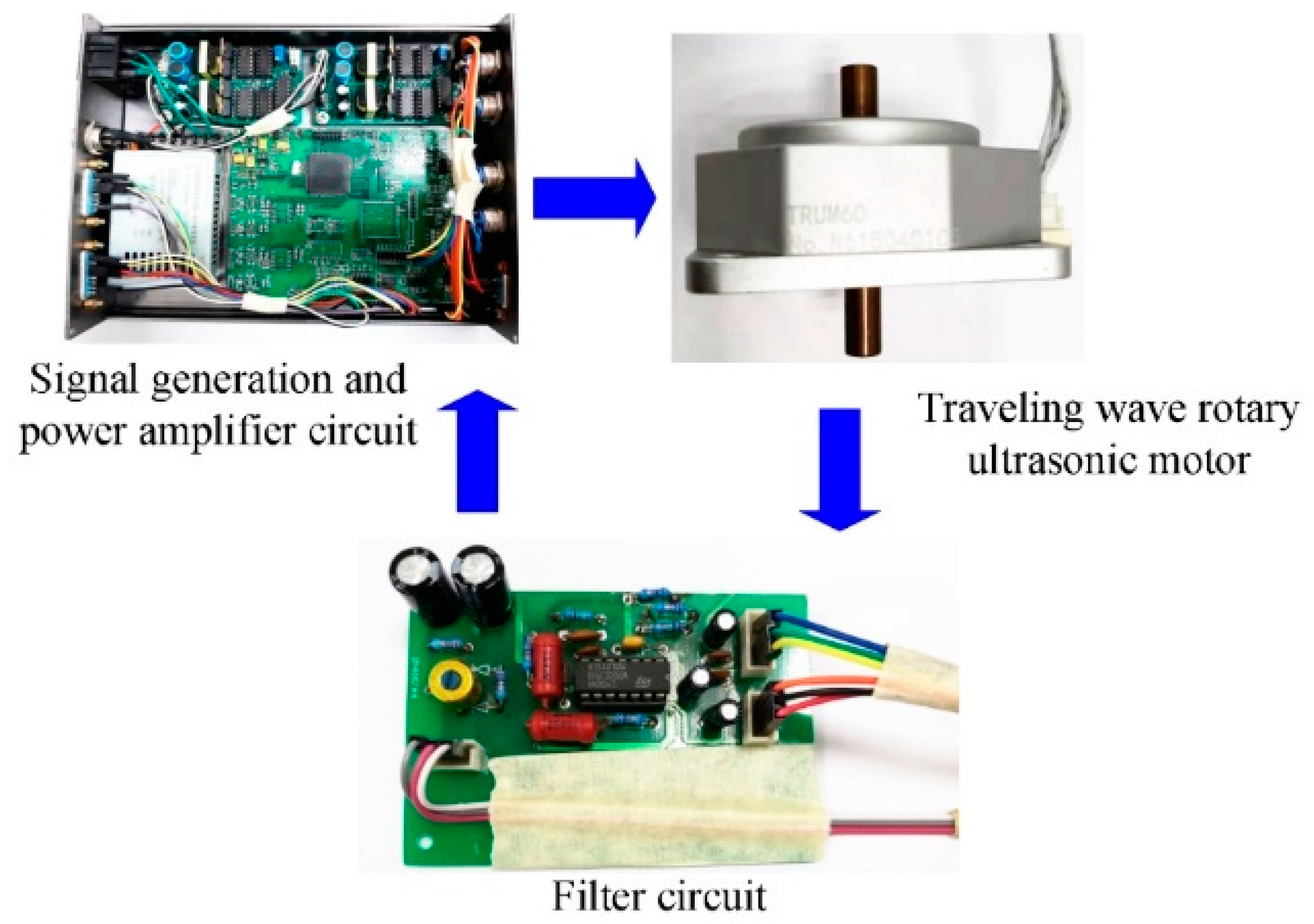
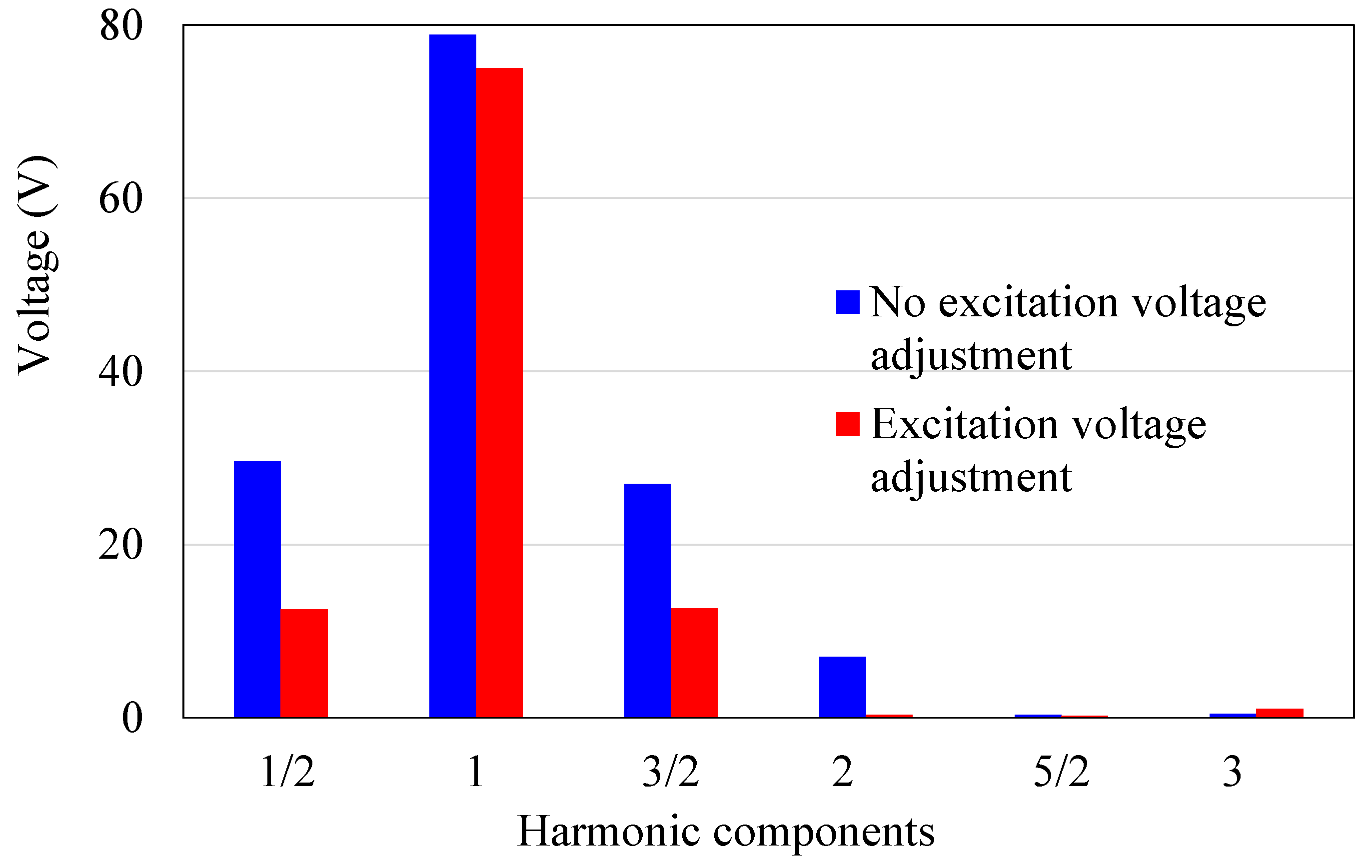
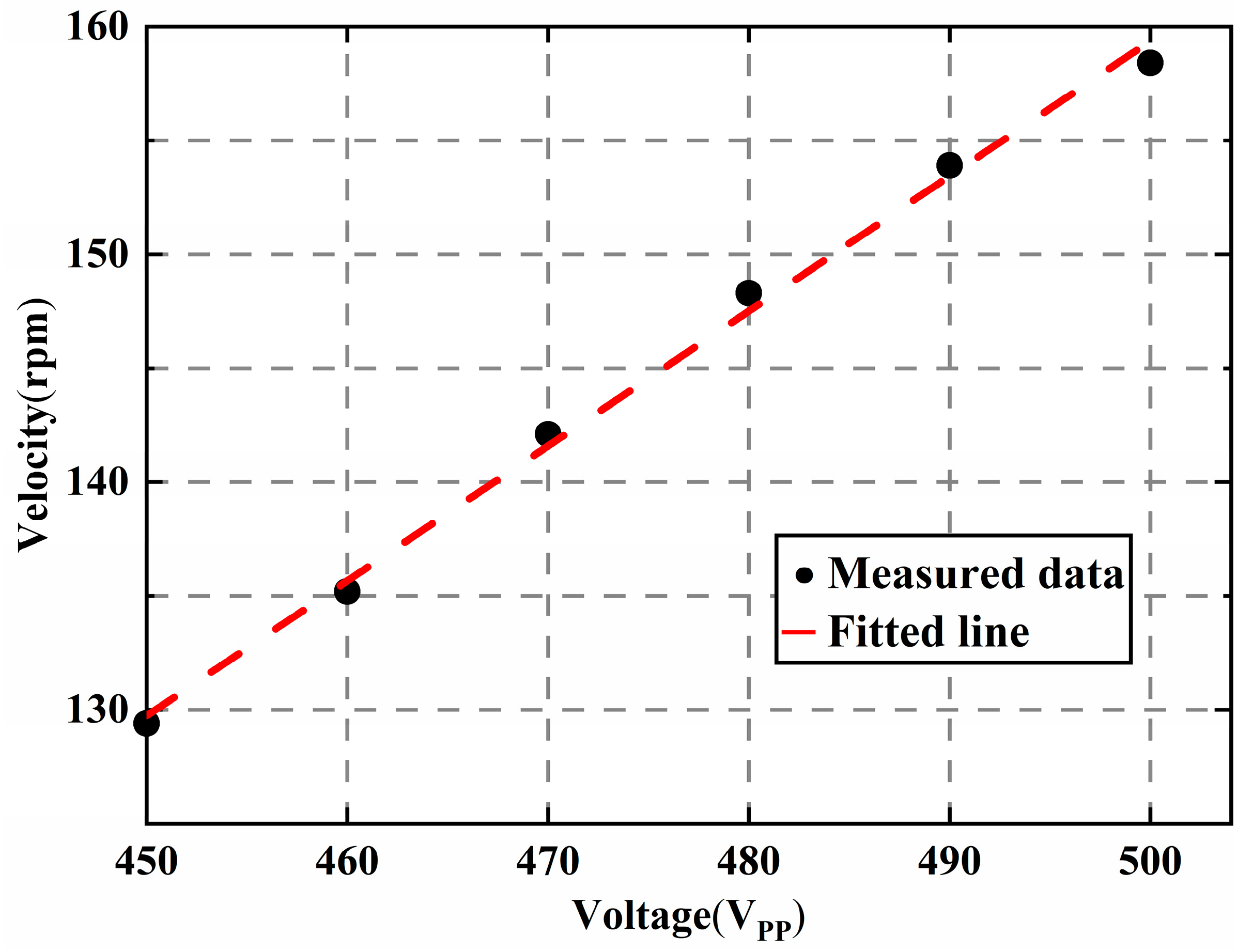

Disclaimer/Publisher’s Note: The statements, opinions and data contained in all publications are solely those of the individual author(s) and contributor(s) and not of MDPI and/or the editor(s). MDPI and/or the editor(s) disclaim responsibility for any injury to people or property resulting from any ideas, methods, instructions or products referred to in the content. |
© 2022 by the authors. Licensee MDPI, Basel, Switzerland. This article is an open access article distributed under the terms and conditions of the Creative Commons Attribution (CC BY) license (https://creativecommons.org/licenses/by/4.0/).
Share and Cite
Li, X.; Huang, T.; Zhao, N.; Shen, Y.; Huang, J.; Li, X.; Li, J.; Yang, L. A Design Method of Traveling Wave Rotary Ultrasonic Motors Driving Circuit under High Voltage Using Single-Sided Hertzian Contact Forced Oscillator Model. Micromachines 2023, 14, 64. https://doi.org/10.3390/mi14010064
Li X, Huang T, Zhao N, Shen Y, Huang J, Li X, Li J, Yang L. A Design Method of Traveling Wave Rotary Ultrasonic Motors Driving Circuit under High Voltage Using Single-Sided Hertzian Contact Forced Oscillator Model. Micromachines. 2023; 14(1):64. https://doi.org/10.3390/mi14010064
Chicago/Turabian StyleLi, Xiaoniu, Tianlu Huang, Ning Zhao, Youtao Shen, Jiada Huang, Xuan Li, Jiayi Li, and Lin Yang. 2023. "A Design Method of Traveling Wave Rotary Ultrasonic Motors Driving Circuit under High Voltage Using Single-Sided Hertzian Contact Forced Oscillator Model" Micromachines 14, no. 1: 64. https://doi.org/10.3390/mi14010064
APA StyleLi, X., Huang, T., Zhao, N., Shen, Y., Huang, J., Li, X., Li, J., & Yang, L. (2023). A Design Method of Traveling Wave Rotary Ultrasonic Motors Driving Circuit under High Voltage Using Single-Sided Hertzian Contact Forced Oscillator Model. Micromachines, 14(1), 64. https://doi.org/10.3390/mi14010064







